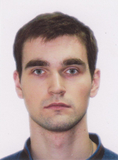BibTeX
@inproceedings{Guzov3DV25,
TITLE = {{HMD}^2: {E}nvironment-aware Motion Generation from Single Egocentric Head-Mounted Device},
AUTHOR = {Guzov, Vladimir and Jiang, Yifeng and Hong, Fangzhou and Pons-Moll, Gerard and Newcombe, Richard and Liu, C. Karen and Ye, Yuting and Ma, Lingni},
LANGUAGE = {eng},
PUBLISHER = {IEEE},
YEAR = {2025},
PUBLREMARK = {Accepted},
MARGINALMARK = {$\bullet$},
BOOKTITLE = {3DV 2025, 12th International Conference on 3D Vision},
ADDRESS = {Singapore},
}Endnote
%0 Conference Proceedings %A Guzov, Vladimir %A Jiang, Yifeng %A Hong, Fangzhou %A Pons-Moll, Gerard %A Newcombe, Richard %A Liu, C. Karen %A Ye, Yuting %A Ma, Lingni %+ Computer Vision and Machine Learning, MPI for Informatics, Max Planck Society External Organizations External Organizations Computer Vision and Machine Learning, MPI for Informatics, Max Planck Society External Organizations External Organizations External Organizations External Organizations %T HMD2: Environment-aware Motion Generation from Single Egocentric Head-Mounted Device : %G eng %U http://hdl.handle.net/21.11116/0000-0010-8BFB-7 %D 2025 %B 12th International Conference on 3D Vision %Z date of event: 2025-03-25 - 2025-03-28 %C Singapore %B 3DV 2025 %I IEEE

